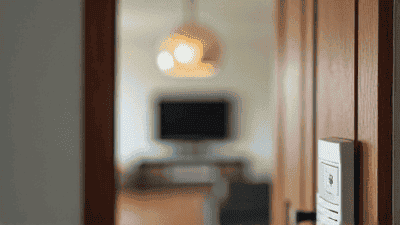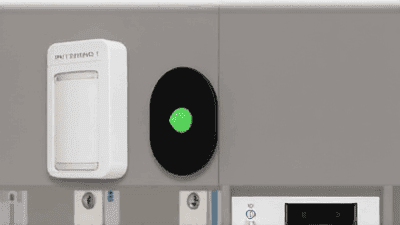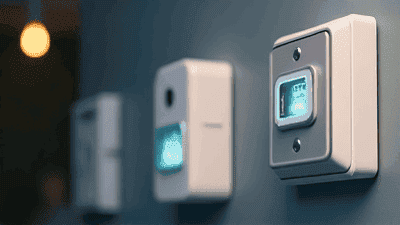
The rapid advancement of technology has transformed the way we live, and one of the most significant innovations in recent years is the rise of smart home technology. At the heart of this revolution are smart sensors and home automation systems, which work together to make our homes safer, more comfortable, and more efficient. Smart sensors detect changes in their environment, such as motion, temperature, or light, and transmit this data to a central hub or connected devices. These devices can then automate tasks, provide real-time alerts, and enhance the overall functionality of your home.
Before diving into their benefits, let’s first define smart sensors and home automation and understand how they work together.
Smart sensors are devices that detect and measure specific environmental factors, such as motion, temperature, light, humidity, or even air quality. These sensors are connected to a home automation system or network, allowing them to communicate with other devices and trigger actions based on the data they collect. Examples of smart sensors include motion detectors, door and window sensors, temperature sensors, and water leak detectors.
Home automation refers to the use of technology to control and automate household functions, such as lighting, heating, security, and entertainment. Through a central hub or app, home automation systems allow you to manage connected devices remotely, set schedules, and create custom routines. For example, you can program your lights to turn on automatically when you arrive home or set your thermostat to adjust based on the time of day.
When smart sensors and home automation work together, they create an intelligent ecosystem that responds to your needs, enhances convenience, and improves the overall functionality of your home.

The integration of smart sensors and home automation offers numerous benefits, ranging from increased safety to improved energy efficiency. Here are some of the key advantages:
One of the most significant benefits of smart sensors and automation is the ability to enhance home security. Smart sensors, such as motion detectors, door and window sensors, and security cameras, can detect unauthorized entry and alert you in real time. For example, if a motion sensor detects movement in your home while you’re away, it can trigger an alarm, send a notification to your smartphone, and even turn on lights to scare off intruders.
Smart sensors can also improve safety by monitoring potential hazards in your home. Smoke detectors, carbon monoxide detectors, and water leak sensors can detect dangerous conditions and alert you immediately, allowing you to take action before the situation escalates. For example, a water leak sensor can detect flooding in your basement and automatically shut off the water supply to prevent further damage.
Home automation systems can help you save energy by optimizing the use of heating, cooling, and lighting. Smart thermostats, for instance, can adjust the temperature based on your schedule and preferences, while motion-activated lights can ensure that lights are only on when needed. These small adjustments can lead to significant savings on your energy bills over time.
Smart sensors and automation make daily life more convenient by automating routine tasks and responding to your needs. For example, smart blinds can open and close based on the time of day or the amount of sunlight, while smart speakers can play your favorite music when you enter the room. These features create a more comfortable and personalized living environment.
With smart sensors and automation, you can monitor and control your home from anywhere, giving you peace of mind whether you’re at work or on vacation. You can check the status of your security system, adjust your thermostat, or even view live footage from your security cameras, all from your smartphone.
There are many types of smart sensors, each designed to monitor specific environmental factors. Here are some of the most common smart sensors and how they can be used in your home:
Motion sensors detect movement in their vicinity and are commonly used for security and lighting purposes. They can trigger alarms, turn on lights, or send alerts when motion is detected.
Applications:
These sensors detect when doors or windows are opened or closed. They are often used for security and can alert you if a door or window is left open.
Applications:
Temperature sensors monitor the ambient temperature in your home and can be used to control heating and cooling systems.
Applications:
Humidity sensors measure the level of moisture in the air and are often used in conjunction with temperature sensors to create a comfortable indoor environment.
Applications:
Light sensors measure the amount of light in a room and can be used to automate lighting or adjust window blinds.
Applications:
Water leak sensors detect the presence of water and are typically placed in areas prone to flooding, such as basements, bathrooms, or near water heaters.
Applications:
Air quality sensors monitor the levels of pollutants, such as carbon dioxide, volatile organic compounds (VOCs), and particulate matter, in the air.
Applications:

Now that we’ve explored the benefits and types of smart sensors, let’s discuss how to integrate these technologies into your home. Here are some practical tips to help you get started:
Before investing in smart sensors and automation, consider what you want to achieve. Are you looking to enhance security, save energy, or increase comfort? Identifying your priorities will help you choose the right devices and create a system that meets your needs.
A central hub, such as Amazon Alexa, Google Home, or Apple HomeKit, serves as the brain of your home automation system. It allows you to connect and control all your smart devices from a single app or voice command. Choose a hub that is compatible with the devices you plan to use.
If you’re new to smart home technology, start with basic devices like smart lights, a smart thermostat, and a few motion sensors. These devices are relatively easy to install and can significantly improve your home’s functionality.
Once you’re comfortable with the basics, you can expand your system by adding more advanced devices, such as security cameras, door sensors, and air quality monitors. This approach allows you to build a system that evolves with your needs.
Take advantage of automation to streamline daily tasks. For example, you can set your lights to turn on and off at specific times, program your thermostat to adjust based on your schedule, or create custom routines that trigger multiple devices with a single command.
After setting up your system, monitor its performance and make adjustments as needed. For example, if you notice that your motion-activated lights are too sensitive, you can adjust the settings to reduce false triggers.
As with any connected technology, it’s essential to prioritize the security and privacy of your smart home system. Use strong passwords, enable two-factor authentication, and keep your devices’ firmware up to date to protect against potential threats.
Different areas of your home have unique needs and challenges. Here’s how you can use smart sensors and automation to enhance specific spaces:
The living room is a central gathering space that can benefit from enhanced lighting, entertainment, and comfort.
The kitchen is a high-traffic area where safety and efficiency are key.
The bedroom should be a comfortable and relaxing space.
The bathroom is another area where water leaks and humidity can be a concern.
Outdoor areas can also benefit from smart sensors and automation.

As technology continues to evolve, the capabilities of smart sensors and home automation are expected to grow even further. Here are some trends to watch for in the future:
Artificial intelligence (AI) and machine learning will enable smarter and more predictive home automation systems. For example, your system could learn your daily routines and adjust settings automatically to suit your preferences.
Future smart sensors will provide even more detailed environmental data, such as detecting specific pollutants or allergens in the air. This will allow for more precise control of air quality and climate in your home.
Future home automation systems will become even more energy-efficient by optimizing the use of appliances, lighting, and heating/cooling systems based on real-time data and predictive analytics.
As more devices become connected, home automation systems will be able to integrate with a wider range of products, from cars to wearable devices, creating a seamless and interconnected living experience.
Smart sensors and home automation have the potential to transform your home into a safer, more comfortable, and more efficient living environment. By detecting and responding to changes in your environment, these technologies can help you save energy, enhance security, and streamline daily tasks. Whether you’re looking to start with a few basic devices or build a fully automated smart home, the possibilities are endless. As technology continues to advance, the future of home automation promises even greater convenience, customization, and control. Embrace the smart home revolution and enjoy the benefits of a more intelligent and connected living space.